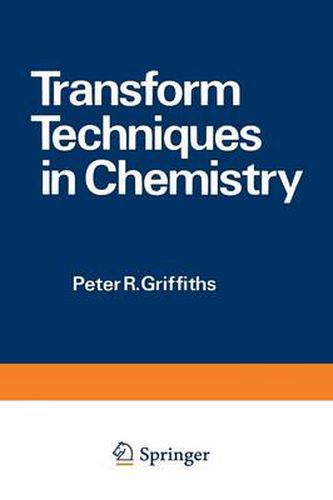Readings Newsletter
Become a Readings Member to make your shopping experience even easier.
Sign in or sign up for free!
You’re not far away from qualifying for FREE standard shipping within Australia
You’ve qualified for FREE standard shipping within Australia
The cart is loading…






This title is printed to order. This book may have been self-published. If so, we cannot guarantee the quality of the content. In the main most books will have gone through the editing process however some may not. We therefore suggest that you be aware of this before ordering this book. If in doubt check either the author or publisher’s details as we are unable to accept any returns unless they are faulty. Please contact us if you have any questions.
The application of the Fourier transform is being seen to an increasing extent in all branches of chemistry, but it is in the area of chemical analysis that the greatest activity is taking place. Fourier transform infrared and nuclear magnetic resonance spectrometry are already routine methods for obtaining high-sensitivity IR and NMR spectra. Analogous methods are now being developed for mass spectrometry (Fourier transform ion cyclo tron resonance spectrometry) and microwave spectroscopy, and Fourier transform techniques have been successfully applied in several areas of electrochemistry. In addition the fast Fourier transform algorithm has been used for smoothing, interpolation, and more efficient storage of data, and has been studied as a potential method for more efficient identification of samples using pattern recognition techniques. Linear transforms have also been shown to be useful in analytical chemistry. Probably the most important of these is the Hadamard transform, which has been applied in alternative methods for obtaining IR and NMR data at high sensitivity. Even though measurements involving this algorithm will probably not be applied as universally as their Fourier transform ana logs, in the area of pattern recognition application of the Hadamard trans form will in all probability prove more important than application of the Fourier transform.
$9.00 standard shipping within Australia
FREE standard shipping within Australia for orders over $100.00
Express & International shipping calculated at checkout
This title is printed to order. This book may have been self-published. If so, we cannot guarantee the quality of the content. In the main most books will have gone through the editing process however some may not. We therefore suggest that you be aware of this before ordering this book. If in doubt check either the author or publisher’s details as we are unable to accept any returns unless they are faulty. Please contact us if you have any questions.
The application of the Fourier transform is being seen to an increasing extent in all branches of chemistry, but it is in the area of chemical analysis that the greatest activity is taking place. Fourier transform infrared and nuclear magnetic resonance spectrometry are already routine methods for obtaining high-sensitivity IR and NMR spectra. Analogous methods are now being developed for mass spectrometry (Fourier transform ion cyclo tron resonance spectrometry) and microwave spectroscopy, and Fourier transform techniques have been successfully applied in several areas of electrochemistry. In addition the fast Fourier transform algorithm has been used for smoothing, interpolation, and more efficient storage of data, and has been studied as a potential method for more efficient identification of samples using pattern recognition techniques. Linear transforms have also been shown to be useful in analytical chemistry. Probably the most important of these is the Hadamard transform, which has been applied in alternative methods for obtaining IR and NMR data at high sensitivity. Even though measurements involving this algorithm will probably not be applied as universally as their Fourier transform ana logs, in the area of pattern recognition application of the Hadamard trans form will in all probability prove more important than application of the Fourier transform.